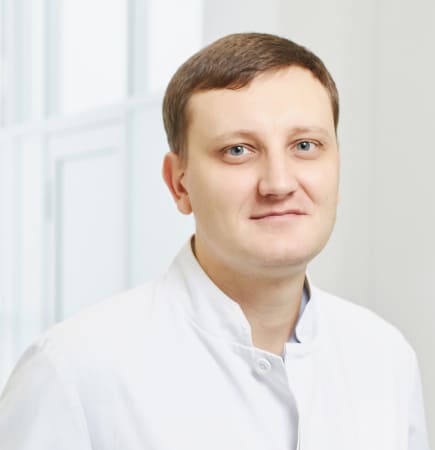This is a method of examining the mucous membrane of the tracheobronchial tree, including the trachea, bronchi, and also the larynx.
Indications for Performing Bronchoscopy
- Diagnosis of inflammatory and scar processes in the trachea and bronchi;
- Diagnosis of tumors of the trachea, central and peripheral lung tumors (benign and malignant) detected on X-rays, with the collection of material for cytological or histological examination to differentiate between malignant and benign formations, determine the morphological structure and extent of the malignant process, as well as any associated diseases with a confirmed diagnosis of cancer;
- Unclear etiology of bronchial stenoses and bronchiectasis - examination of significantly curved bronchi;
- Inflammatory processes accompanied by segmental and subsegmental atelectasis or infiltrates;
- Chronic nonspecific bronchial diseases;
- Chronic suppurative lung diseases (search for bronchi draining lung abscesses);
- Hemoptysis;
- Small foreign bodies embedded in subsegmental or more distal bronchi;
- Disseminated lung diseases;
- Suspected tuberculosis;
- Mediastinal diseases;
- Pleural diseases;
- Evaluation of the condition of the bronchial stump after surgery;
- Monitoring the condition of the trachea and bronchi during endotracheal intubation and tracheostomy;
- Planning and performing various endoscopic surgeries;
- Change in the character of cough in a smoker + cough for more than 1 month, against the background of intensive therapy.
Contraindications and Possible Complications of Bronchoscopy
Absolute contraindications:
- Agonal condition;
- Acute stage of myocardial infarction;
- Acute stage of stroke;
- Asthmatic status;
Relative contraindications:
- Fever unrelated to a lung process is recommended to postpone the procedure for several days;
- A patient's condition where bronchoscopy does not provide a solution;
- Laryngeal stenosis (not a contraindication for fibrobronchoscopy through an intubation tube or tracheostomy);
- Intolerance to anesthetics (the examination is performed under anesthesia);
- Severely compromised general patient condition;
- Absence of signed informed consent from the patient for the procedure (examination);
- Local changes (significant deformation of the tracheobronchial tree).
Preparation for the Procedure
Usually, the procedure is performed in the morning. Food intake is allowed at least 8 hours before the procedure, as bronchoscopy is done on an empty stomach. This is necessary to avoid food residues entering the respiratory tract.
If the patient is taking medication, they should consult with a doctor about the medication schedule one day before the examination. On the day of bronchoscopy, drinking water and smoking are not allowed.
Anesthesia for Endoscopic Examinations
Local anesthesia is used for endoscopic examinations of the upper respiratory tract (nasopharyngoscopy, laryngoscopy, bronchoscopy). If necessary and upon the patient's request, all endoscopic examinations can be performed under sedation (anesthesia).
How Bronchoscopy Is Performed
The procedure is performed with the patient sitting or lying down. The doctor sprays anesthetic on the mucous membranes of the nasal cavity, oropharynx, and larynx. Anesthesia not only helps minimize pain but also suppresses coughing. When the medications start to take effect, the patient experiences numbness of the throat and tongue. Subsequently, the endoscope is inserted into the respiratory tract through the nasal or oral cavity. The procedure is painless. Since the diameter of the bronchi is much larger than that of the bronchoscope, there is no discomfort during breathing. The doctor then examines the condition of the bronchi. If necessary, tissue samples are taken for examination (biopsy).
In the EVIMED center, the doctor can perform the following during bronchoscopy:
- Lavage and sanitation of the bronchial tree
- Biopsy
- Restoration of the bronchial lumen
- Stenting of the bronchial lumen
These procedures are performed after a prior consultation with the doctor.
After the procedure, the patient is provided with video material of the performed manipulation, and a consultation with a specialist is conducted, including recommendations and planning of further treatment or observation.
If material is taken for histological or cytological examination, the results are issued within 5-7 working days.
Subsequent Recovery after Bronchoscopy
After a routine diagnostic procedure, it is advisable to wait for some time before eating until the local anesthetic effect in the throat completely disappears (30-40 minutes). After general anesthesia, nervous system recovery occurs within a day, and during this time, it is not recommended to drive a car or engage in activities that require attention.
Helicobacter pylori
Helicobacter pylori is a widely prevalent gastric infection agent that causes pathologies such as gastritis, peptic ulcer disease, adenocarcinoma, and low-grade lymphoma of the stomach. The diagnosis is established based on a breath test, stool antigen analysis, or samples obtained during endoscopic biopsy.
The most reliable diagnosis involves examining material obtained during endoscopic procedures. The collected biopsy sample (a piece of the mucous membrane) is placed in a special reagent, and when evaluating changes in parameters, a specialist provides a conclusion of a positive or negative result.
The breath test is a non-invasive method of examination. It is safe for small children and pregnant women. It can be used for primary diagnosis of Helicobacter pylori as well as for monitoring the progress of anti-Helicobacter therapy and assessing the effectiveness of previously conducted treatment. The test system has a sensitivity of 95%, and specificity (accuracy of the examination) of 97%. This method is non-invasive, fast, cost-effective, and painless. You receive the results immediately after completing the test.
At the EVIMED medical center, you can undergo an analysis for Helicobacter pylori. You can also schedule an appointment with a therapist or gastroenterologist to consult about any symptoms that concern you.
Endoscopic Biopsy
Biopsy is a diagnostic procedure performed to obtain a tissue sample (biopsy specimen). Biopsies are typically taken from suspicious abnormal formations. Examples include tumors, non-healing wounds, polyps, and moles. The technique for conducting the procedure and the necessary instruments are determined based on the location of the biopsy.
The tissue samples obtained through biopsy are sent to a specialized laboratory where a histological analysis is performed. This analysis is based on the fact that all cells in the body have a characteristic structure depending on the tissue to which they belong. When malignancy occurs, the cell's internal structure is disrupted, making it unlike neighboring cells. These changes are usually significant enough to be visible under a regular microscope.
The primary goal of biopsy is to accurately determine whether a new formation is malignant or benign.
Another important piece of information that the examination can provide is how effective the treatment of oncology is in each specific case.
At the EVIMED medical center, various types of biopsies can be performed. We have highly qualified doctors and use modern equipment.



